Strategic pendulum. Part of 1
Accordingly, the operations of the northern (Lublin-Kholmsk operation) and the southern (Galich-Lviv operation) army groups proceeded autonomously, subsequently being connected by the Gorodok battle. By moving in converging directions, the Russian armies reached the flanks of the Austrian group, crushed them, cutting off the Austrian corps from the RR. San and Dniester, surrounded and destroyed.
But, revealing a leak of information, the enemy changed the plan for 1912 and took the deployment of his troops to the west - by 100 km. And now the Austrian troops were covering their adversary on the northern flank - looming over the right flank of the South-Western Front. On the northern flank of the battle, the Austrians managed to preempt the Russians in their deployment and create a general superiority in forces.
1. Austrian infantry regiment advanced to the front. Linz, August 1914
The correlation of forces reflected the characteristics of operational deployment. The right flank of the South-Western Front (4 and 5 Army - 16 Infantry Divisions) opposed the Austro-Hungarian 1 and 4 Armies (19,5 Infantry Division), the army group of Infantry General I. Ferdinand (3). , the army group of cavalry general G. R. von Kummer (2,5 Infantry Divisions) and the German Silesian Landwehr Corps R. von Voirsch (2 Infantry Divisions) - a total of 27 infantry divisions. 337000 Russian fighters against 590000 Austro-Germans (1 to 1,75 ratio), 1100 Russian guns against 1250 enemy's guns. Equal were only cavalry groups (to the beginning of the operation for 5 divisions). The Austro-German command planned the operation with decisive goals - and could well afford it.
2. To the front. Vienna, August 1914
If, for example, in the Russian 5 Army General P. A. Plehve's cavalry there were about 147000 people, then the opposing enemy troops counted: the Austro-Hungarian 4 Army General of the Infantry M. von Auffenberg - over 200000 and Joseph's group -Fredinanda - about 65000 people. M. Auffenberg cited the following information on the national composition of his army - 100000 Czechs and Slovaks, 20000 Bosnians, Italians and Poles, 50000 Germans and 40000 Hungarians (Magyars) [Auffenberg-Komarow M. von. Aus Österreich-Ungarns Teilnahme am Weltkriege. Berlin und Wien, 1920. S. 107.]. We note this fact because the 4-I army on 50% consisted of the Slavs, but this did not prevent it from being one of the best military associations of Austria-Hungary. A similar situation in the correlation of forces was observed between the Austro-Hungarian 1 army and the opposing Russian 4 army.
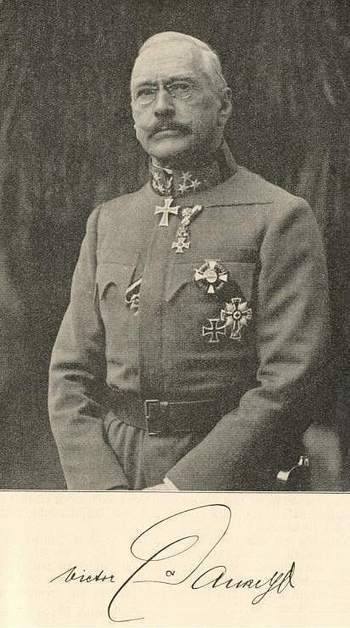
3. The commander of the Austrian 1-th Army, cavalry general V. Dunkl.
4. The commander of the Austrian 4 Army General of the infantry M. von Auffenberg.
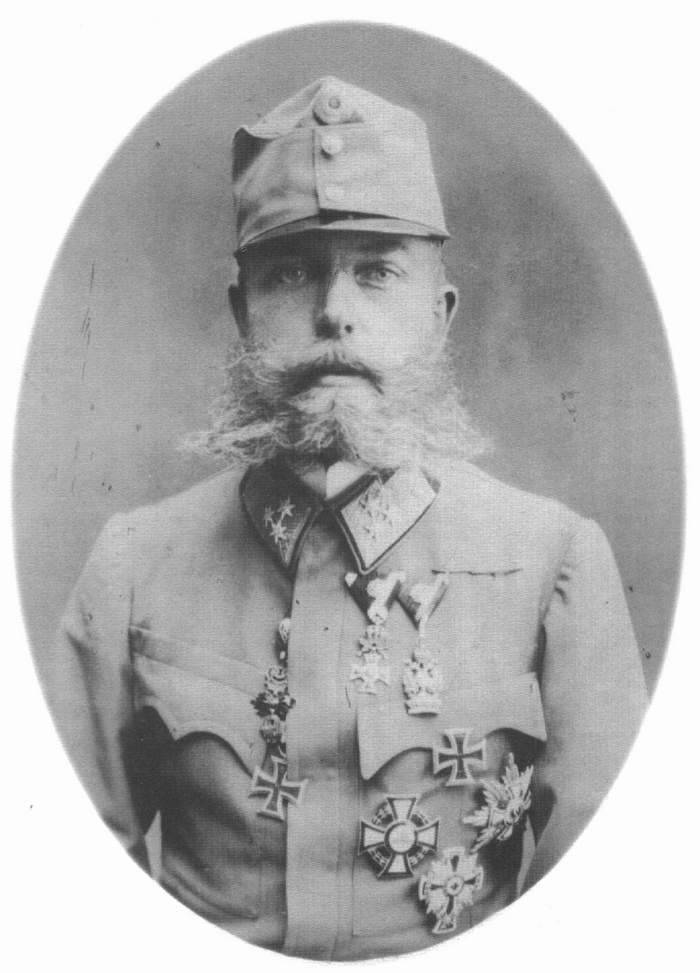
5. Infantry General Joseph Ferdinand.
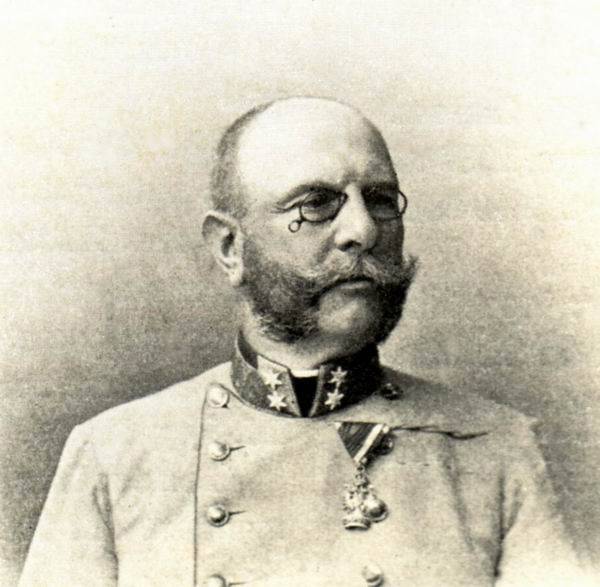
6. Cavalry General G. R. von Kummer.
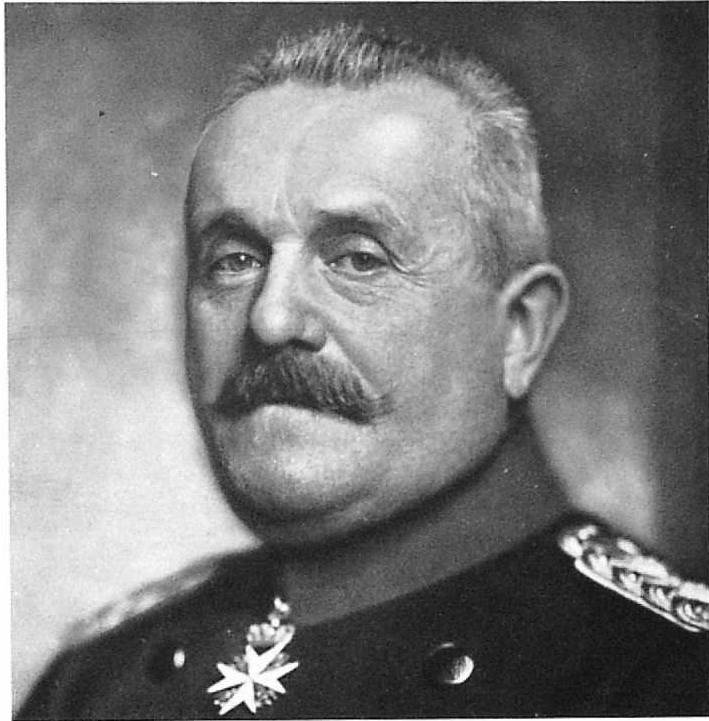
7. R. von Voirsh.
A fundamentally different situation took shape on the southern flank.
The left flank of the Southwestern Front (3 and 8 Army - 354000 people in the 22 infantry divisions) were opposed by the Austro-Hungarian 3 Army and Army Group of the General of the Infantry G. Kevess von Kevessgaz (more than 200000 people in 15 infantry forces) . 1150 Russian guns against 450 Austrian, 7 Russian cavalry divisions opposed 6 Austrian. The enemy overlooked the deployment of the Russian 8 Army General of the cavalry A. A. Brusilov - for which he paid dearly. The troops of the latter were assigned a very important role in the upcoming operation on the environment: "The 8 army, having established itself on the Stryp, changes ... the front of its movement, having the Berezhany-Rohatyn-Podkamen road as its axis ..." [Strategic Essay on the War of 1914 — 1918 CH 1. C. 49.]. The cavalry of the army so successfully covered the deployment of its forces that for the time being the presence of the 8 army was not noticed by the enemy command.
Thus, if the Austrians also deployed 3 armies against other 3-x armies of the front, the opponent of the 8-th army was a weaker unit - the army group of Kevess von Kevessgaz (70000 man, 148 guns). But the group had a strong cavalry (3 divisions). Theoretically, the situation could be rectified by the transfer of the 2 Army from the Serbian Front (158000 man, 480 guns) [White A. Galicia battle. C. 55] - but it was thrown gradually, and it was introduced into the battle piecemeal - and in the end it could not turn the tide.
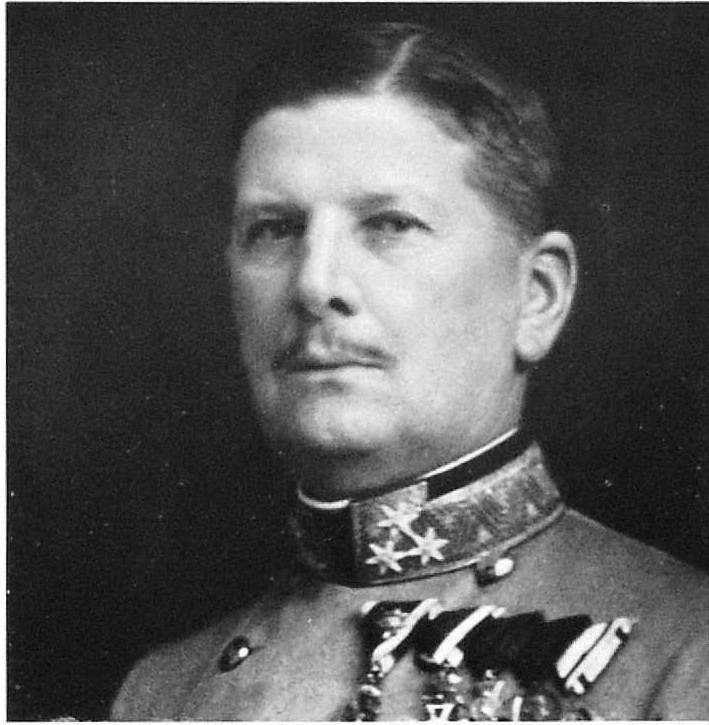
8. Commander of the Austrian 3 Army, cavalry general R. von Broderman.
9. The commander of the Austrian 2-th Army, cavalry general E. von Bem-Ermolli (in the photo - in the center).
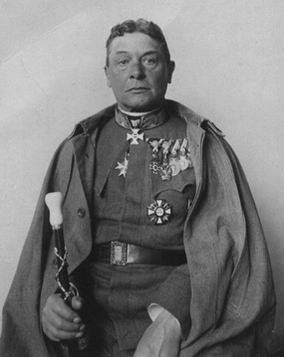
10. The infantry general Kevesse von Kevessgaz.
Austrian operational-strategic planning assumed the defeat of the armies of the right flank of the South-Western Front (for this purpose, the enemy and created a significant superiority in forces) - including also through an operation on the environment. In the south, the Austrians expected to hold out until the main forces smashed the northern flank of the Southwestern Front.
The specificity of the strategic deployment was that a large number of troops (up to 198000 people for the Russians and up to 264000 people for the Austrians) arrived in the course of the operation, having a significant impact on its design. To a large extent, operating with suitable reserves and the ability to navigate in the rapidly changing environment of the oncoming battle determined the outcome of the operation.
In total, the Austrians deployed at the front to the 7 of August: Yaroslav - Przemysl - Lviv - Stanislav - Zaleshchiki 3 army and 3 army groups with a total of 800000 people (with German corps), and awaited the arrival of significant reinforcements. Until 2 / 3 forces were concentrated between Przemysl and the mouth of the river. San - against the Russian forces 4 th and 5 th armies concentrating between pp Bug and Vistula.
The grouping of the Austro-Hungarian troops was valuable, provided that joint actions with the Germans were necessary for a concentric offensive in Poland. But the fact that the Germans paid all the attention only to East Prussia greatly devalued the advantages of the strategic deployment of the Austrians. While in the north the Austrians outnumbered the Russians 4 and 5 armies undoubtedly, then on the southern flank the Austro-Hungarian command had insufficient forces, unable to act as a solid barrier that ensured the main operation - between the Bug and the Vistula. A very unfavorable circumstance was the delay in concentration of the 2 army.
Russian 4 army to 5 August focused on the front of Lublin - Kholm - Kovel - Lutsk - Kremenets - Proskurov - they consisted of 691000 people. There were no strategic reserves - retarded divisions and formations of the 9 Army (Guards and 18 Army Corps) acted in their roles.
11. Commander-in-Chief of the armies of the South-Western Front, General of Artillery N. I. Ivanov.
The smallest volume of troops was concentrated in the armies (4-I and 5-I), deployed between the Bug and the Vistula. The bulk of the troops (3-I and 8-I armies) was concentrated on the Rovnensky and Proskurovsky directions - a step backwards in 100 km from the northern group. But, as noted above, the deployment of Russian armies, based on the biased assumption of deploying the enemy almost along the border, in fact led Russian troops not to bypass the flanks of the Austrians, but to their front. This circumstance was aggravated by the weakness of the Russian forces of the right flank (northern front), and also that the front-right army of the front (4) was noticeably pushed forward - this could lead to its local defeat (while the 5 army was pulled east) . But the 3-I and 8-I armies created a powerful grouping that struck at the most important direction - Galich and Lviv.
An unfavorable circumstance was the miscalculation in the deployment of the right-flank armies of the front, where the numerical superiority of the Austrians, with the approach of the troops of G. R. Kummer and R. von Voirsch on the right bank of the river. Wisla, reached 7-mi infantry divisions. But in the southern army group the Russians, in turn, had superior strength — on the 8 infantry divisions — sufficient to guarantee a successful strike against the Austrian 3 Army and the Kevess group.
12. The commander of the 5 Army of the South-Western Front, cavalry general P. A. Plehve.
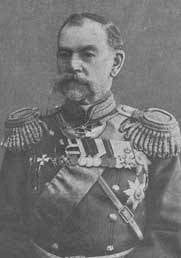
13. The commander of the 4 Army of the UZF, General of Infantry A. E. von Zalc. Removed from the command of 12 August 1914 g.
14. The commander of the 4 Army of the UZF was General of Infantry AE Evert (in fact, from 12. 08. 1914, legally from 22. 08. 1914).
Considering the greatest application of forces by Austrians and Russians on the opposite flanks of their groupings, the operation turned into a kind of “pendulum” - a competition whose meaning was in whose strongest flank would have time to break an opposing weaker opponent.
So, the Russian 3-I and 8-I armies attacked Lviv, and the 4-I and 5 armies attacked Przemysl and Lviv with the prospect of covering the flanks of the Austrian forces and destroying them in Lvov. The Austrian 1 and 4 armies were advancing towards Lublin.
15. The commander of the 3 Army of the UZF, General of Infantry N. V. Ruzsky.
16. The commander of the 8 Army of the South-Western Front, cavalry general A. A. Brusilov.
The operation was carried out 05. 08. - 13. 09. 1914
The Russian 4 army began to move in the direction of Przemysl. On August 10, its 14 Cavalry Division, supported by the 72 Infantry Regiment of Tula and the 18 Artillery Brigade Division, overthrew the Austro-Hungarian 7 Cavalry Division with the loss of the last 160 man [Golovin N.N. From stories 1914 campaigns on the Russian front. Galician battle. The first period. C. 174.]. It should be noted that the Austrian air reconnaissance immediately revealed the actions of the 4 army.
17. Austrian infantry on the march.
18. Austrian lancers.
19. Austrian wagon train.
On August 10, the Russian 5 Army began advancing - with the mission of attacking Moszysk - Lviv, contributing to the Army 4.
But in the 3-day counter-battle at XRUMX 10 - 12 in August, the 3 corps of the 4 army suffered defeats from the army of V. Dunkl and were driven back to Lublin. In particular, on August 10, the 14 Army Corps on the right flank of the 4 Army was crushed and with great losses thrown back to Krasnik [The 178 Infantry Regiment of Vendensky 45 Infantry Division lost the 800-900 man during the first day of the battle. One battalion and 4 company commanders were killed, 4 company commanders were injured. The 180 th Vindava Infantry Regiment lost up to 1,5 thousand people. See: N. Golovin. From the history of the 1914 campaign on the Russian front. Galician battle. The first period. C. 155.], and the 25-I cavalry, 3-I, 5-I and 12-I infantry divisions and 46-I landshurmenny brigade of the enemy penetrated the 101-km gap. The Austrians counted more than 1 thousand Russian prisoners [Golovin N. N. Decree. cit. C. 157]. The enemy also suffered heavy losses - for example, the Austrian 76 Infantry Regiment in the August 11 battle lost up to 50% of personnel.
20. Lublin, 1914
The Russian command tried to fend off the threat, but there were no strong reserves in the 4 army. On August 11, the 16 th Army Corps failed: in a heavy battle, the 3 Regiment of the 41 Division lost up to 4,4 thousand people - one third [White A. Galicia battle. C. 82]. The Austrians for the day of the 11 battle of August with the corps of the 4 army reported the seizure of several thousand prisoners and more 20 guns [Golovin N. The Battle of Galicia. The first period. C. 168]. Problems with communication, lack of unity in the implementation of the maneuver became the main reason for the failures of the 4 army (the first conclusion was the change of command of the army).
21. Russian infantry on the march.
By the end of August 12, the 4 Army was entrenched at the turn of 20 — 45 km to the west, south, and southeast of Lublin. The front command took measures to deploy reinforcements to its composition, primarily troops of the 3 Caucasian Army Corps.
At the same time, the Austrians exaggerated the value of victories at Krasnik: being numerically stronger than the Russians and having a more optimal grouping of troops and the possibility of 1 and 4 armies to take the Russian 4 army into ticks, they missed this chance. Moreover, the victory was not used, since the right flank of V. Dankl’s army began to be transferred to the Krasnostava direction — to oppose the forces of the Russian 4-th army of P. A. Plehve. Attempts at the further advance of the Austro-Hungarian 5 Army to the city of Lublin were repelled by counterstrikes of the reserves that had come up.
The August 13-14 battles were heavy for Russians, the 16 and Grenadier corps were again forced to withdraw (the Austrian 5 and 10 corps took up to 2 thousand prisoners).
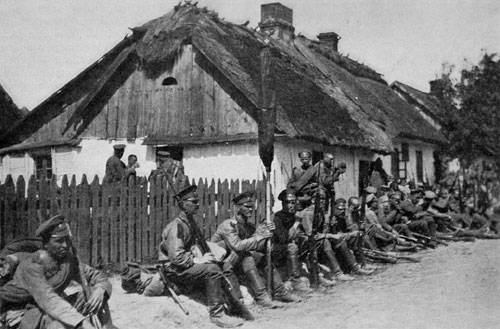
22. Galicia. On a halt (photo piece-cap. Korsakov).
The position on the front of the Russian 14 corps was somewhat better. From August 15, units of the Russian 4 Army tried to attack. In particular, parts of the 14 corps with bayonet counterattacks rejected the Austrians and captured prisoners and 900 guns to 3. [White A. Decree. Cit. C. 94.]. The 16 and Grenadier corps held out, and the arrival of fresh connections (primarily the 18 body) made it possible to create prerequisites for future action.
Up to the transition to the general offensive of the northern flank armies during the second stage of the Galician battle, the 4 army fought with the group of G. R. Kummer and the Austrian 5 and 10 corps. Thus, in the battles of 17 - 18, Kummer's group was defeated in August (the 95-i landscapeshturmenny division was defeated by Opole, losing more than 1 thousand prisoners, 3 guns and 10 machine guns). Part of the Austrian 24 Division that broke through on the Travniki were stopped.
1 card. Krasnik and Tomashevsk battles. Dating on the map - a new style.
The reinforcements increased the forces of the 4 Army in the 5 infantry divisions: now it included up to 14 infantry and 3,5 cavalry divisions. It was created superiority over the army of V. Dunkl - the latter, although it increased its composition on the 2,5 division, but of low quality (flat pieces). And on the contrary, the change of command of the 4 Army (AE Evert took command) and the approach of the Guards and Caucasians significantly raised the morale of the operational forces.
At the same time, events developed at the front of the second army of the right flank of the front - 5. As a result of the defeat of a neighbor near Krasnik, the front command ordered the 5 army to make a sharp turn to the west (initially it moved south) by helping the left flank of the 4 army. The army of P. A. Plehve was forced to perform 2 tasks that forced her to send corps: to the west, assisting the 4 army, and to the south, covering the left flank of the 3 army.
As a result, the 5 Army came to the battlefield stretched along the front by more than 100 km 2 groups of corps (25-19 and 5-17), which were separated from each other by serious intervals - before the transition. The left flank of the army opened (it should have been provided by the 3 Army, but it was located to the south). P.N. Plehve's 5 Army landed a flank attack from the south — M. Auffenberg’s 4 Army inflicted it.
To be continued
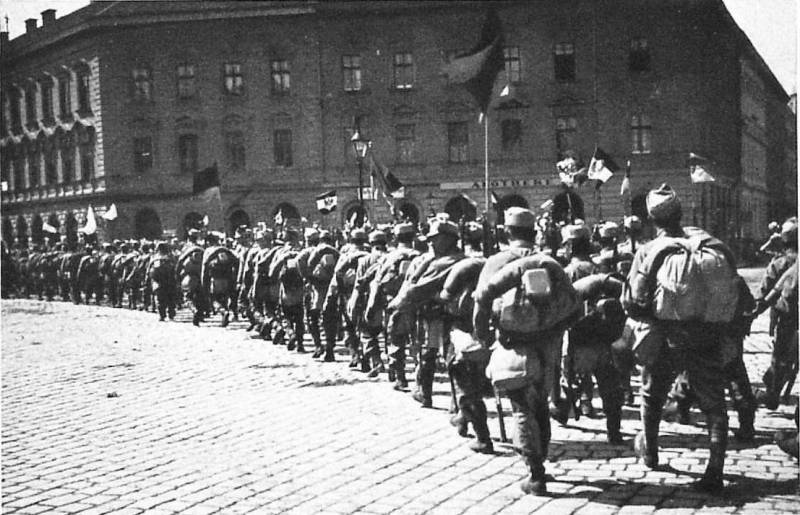
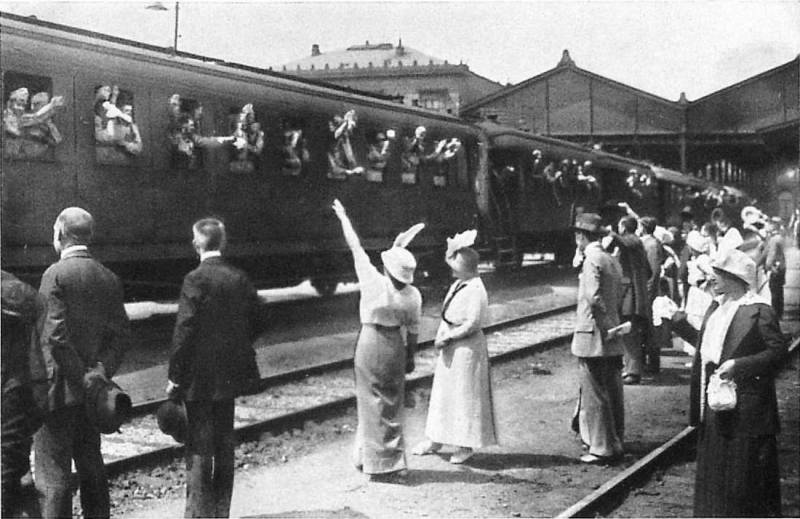
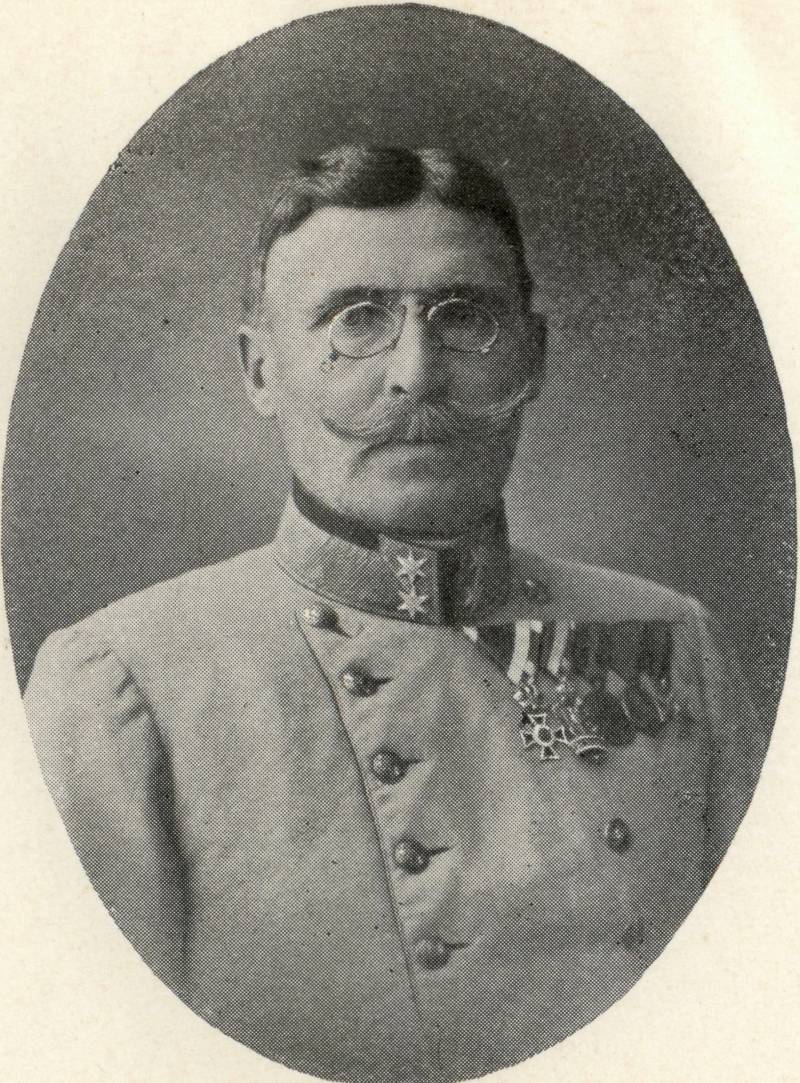
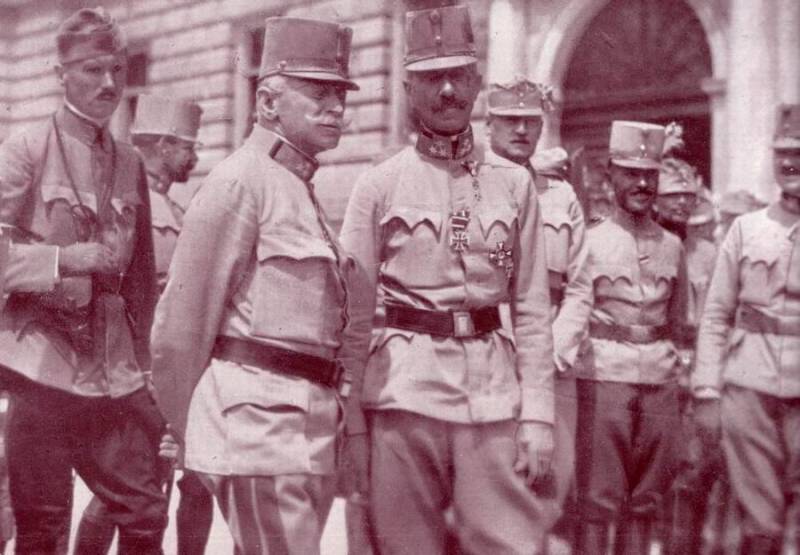
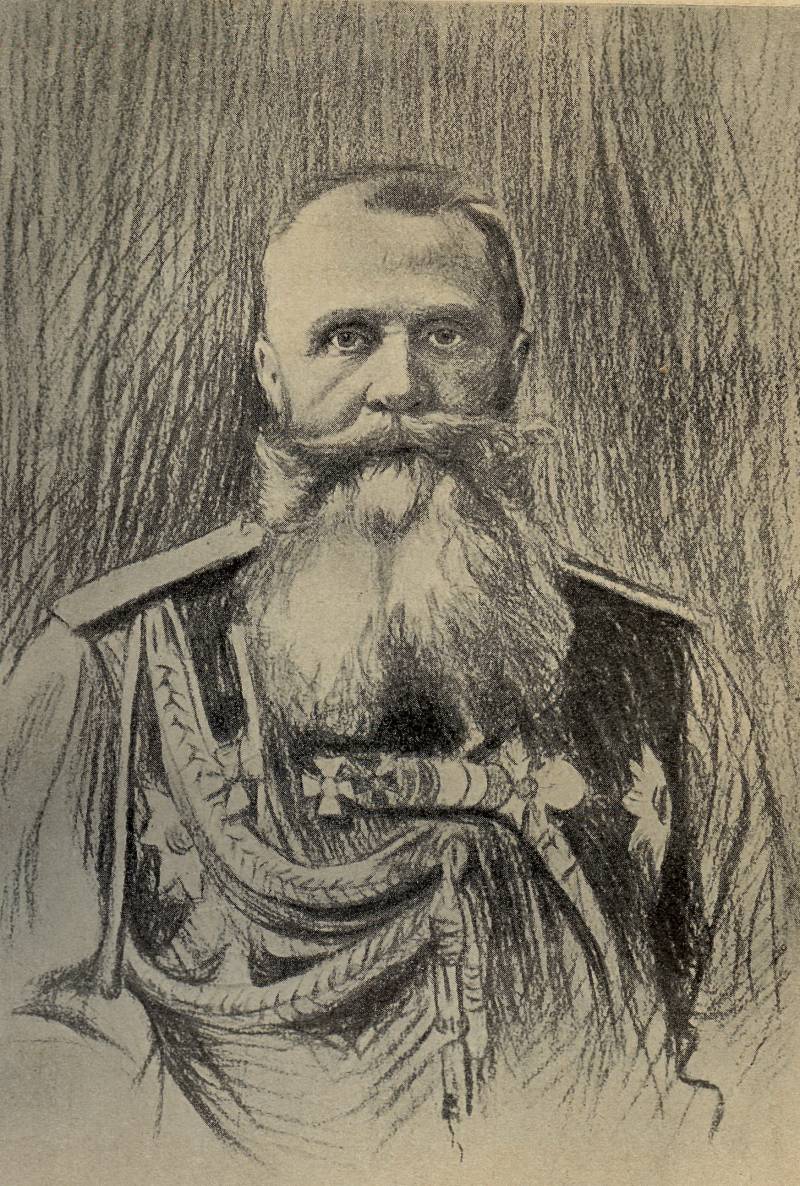
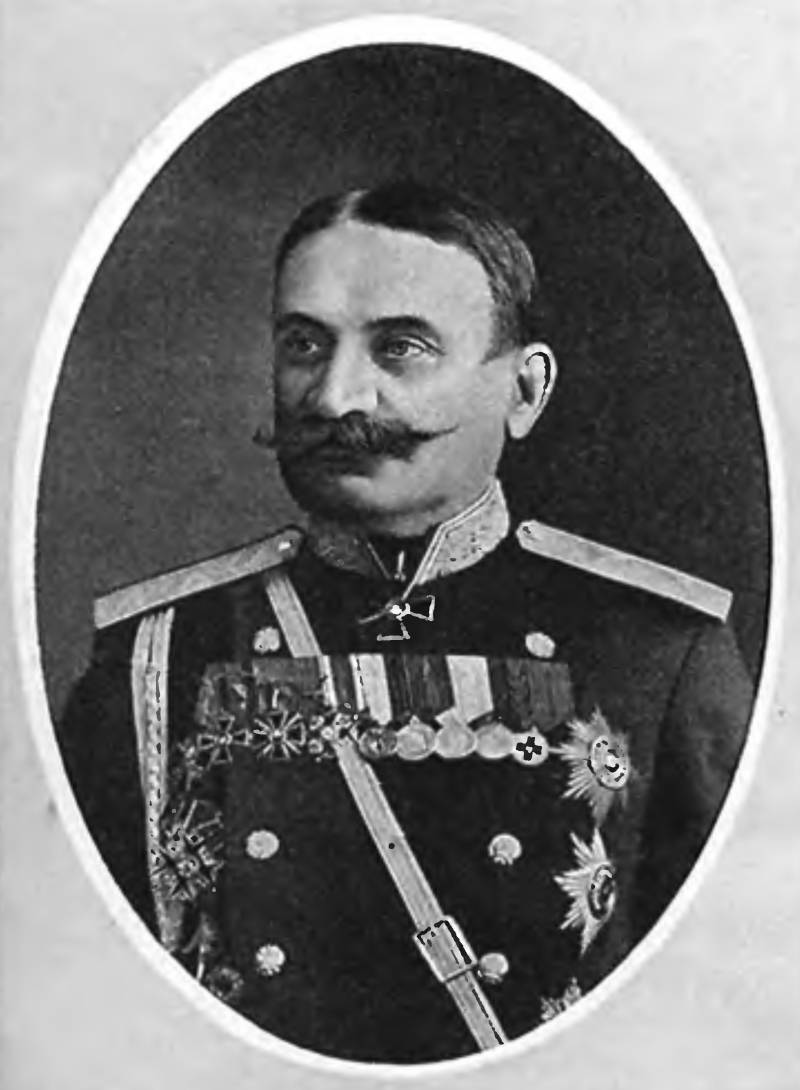
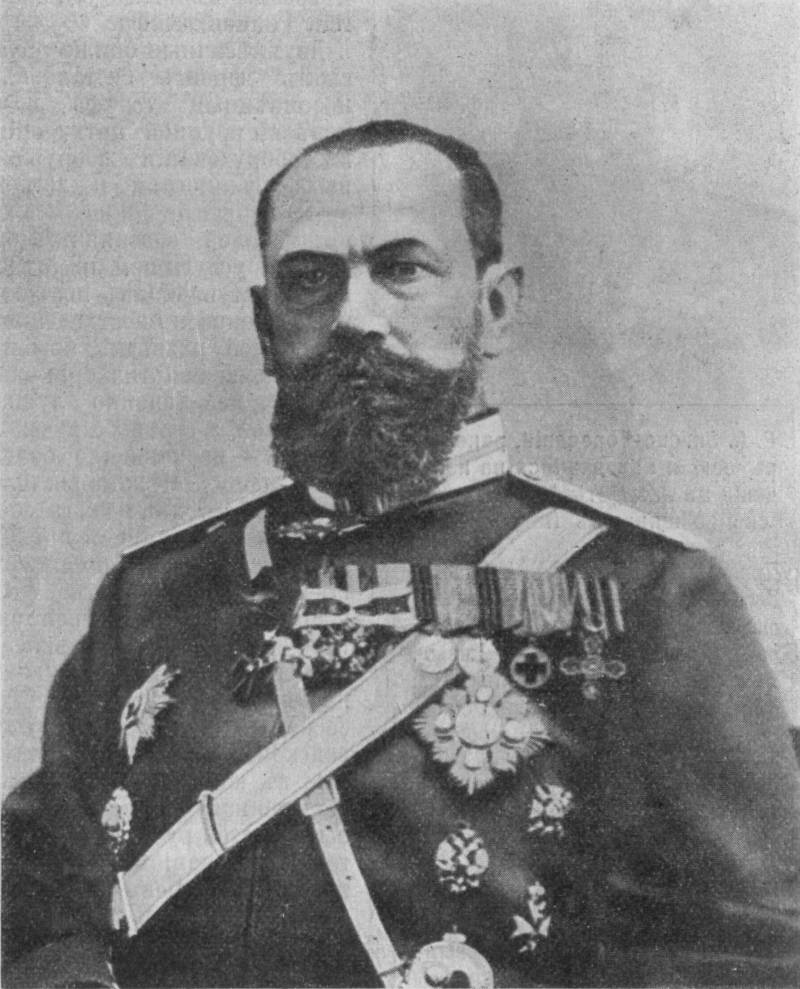
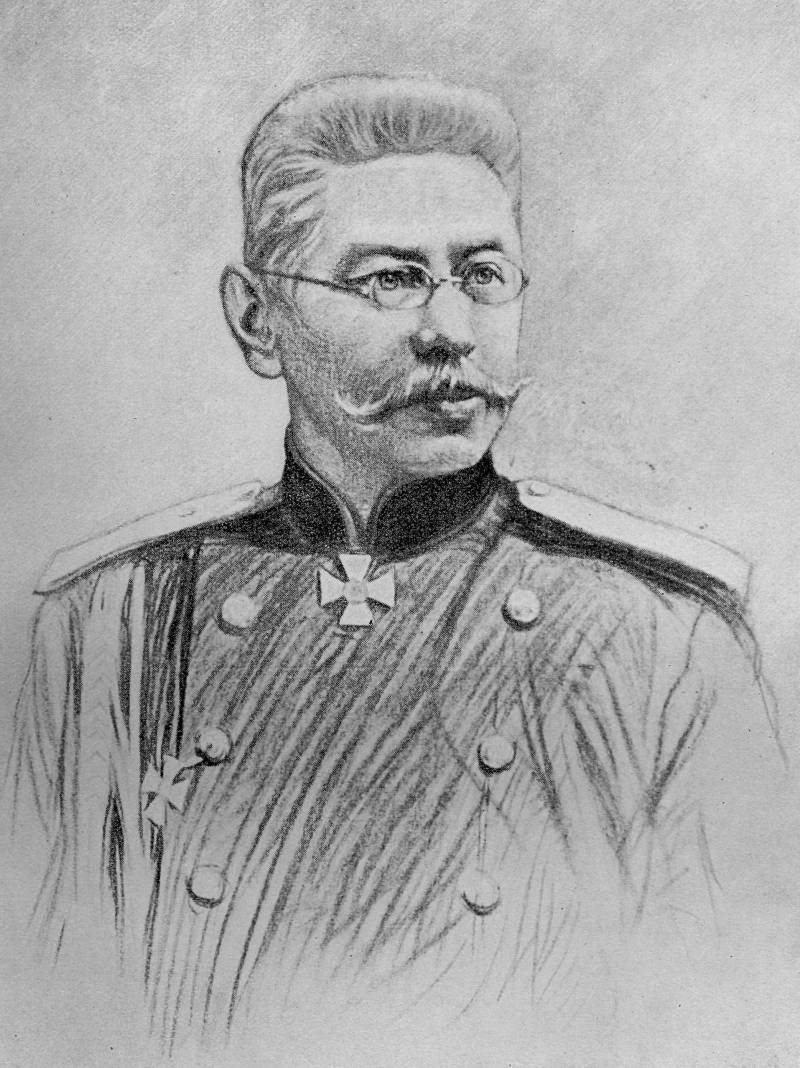
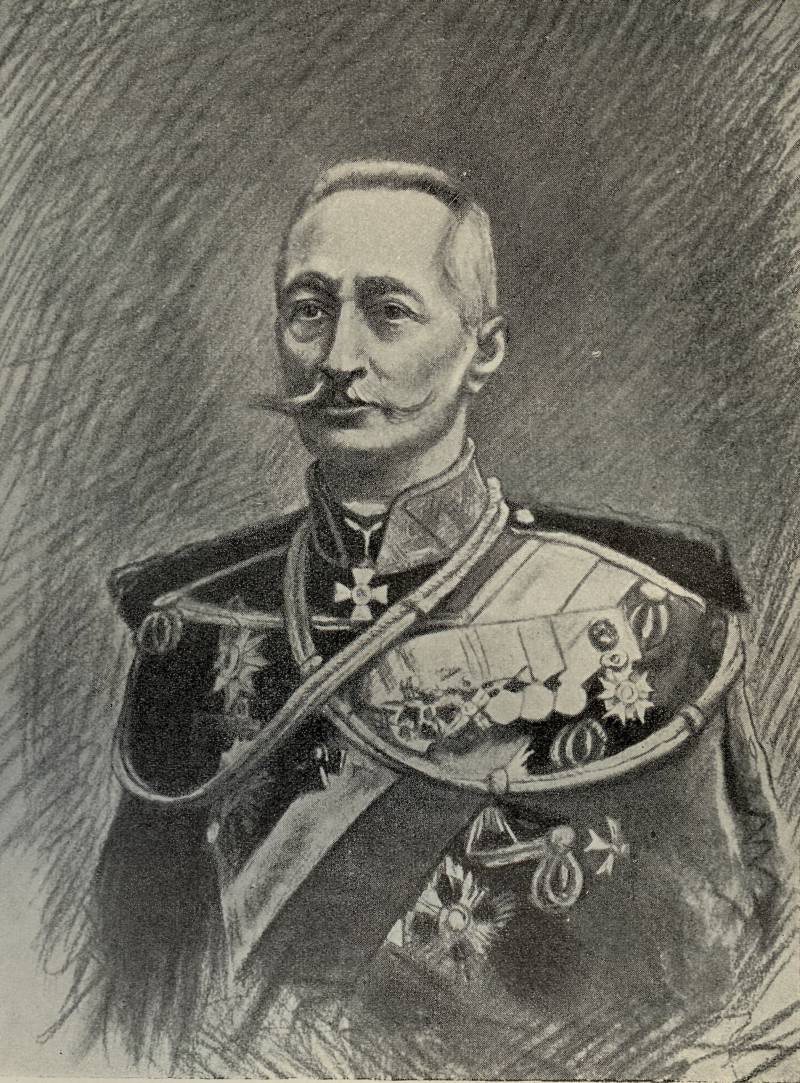
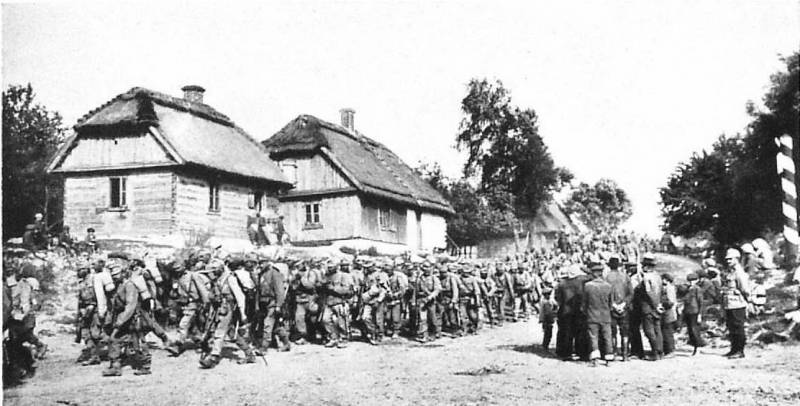
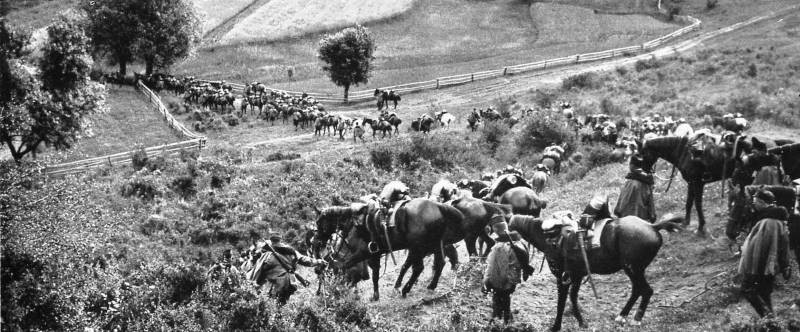
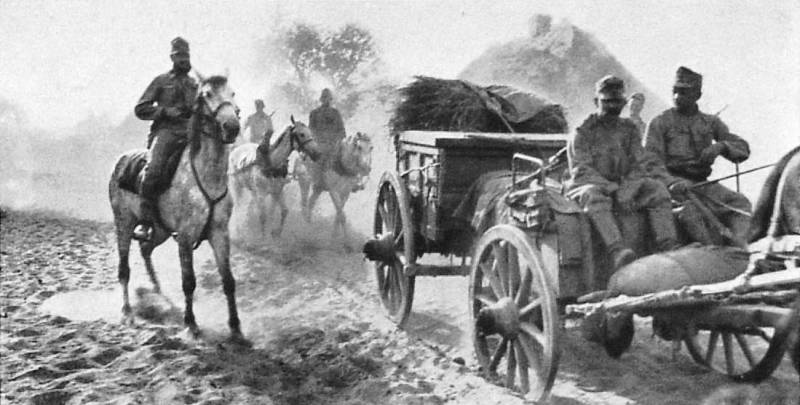
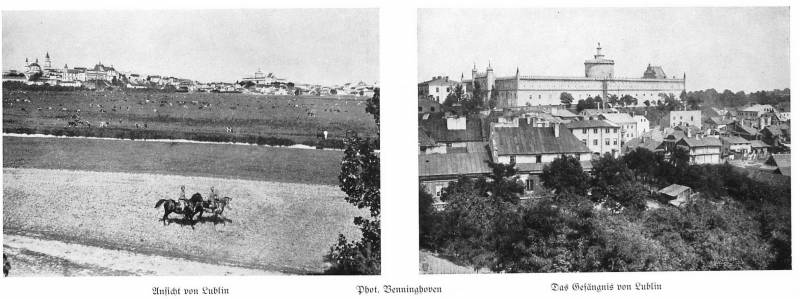
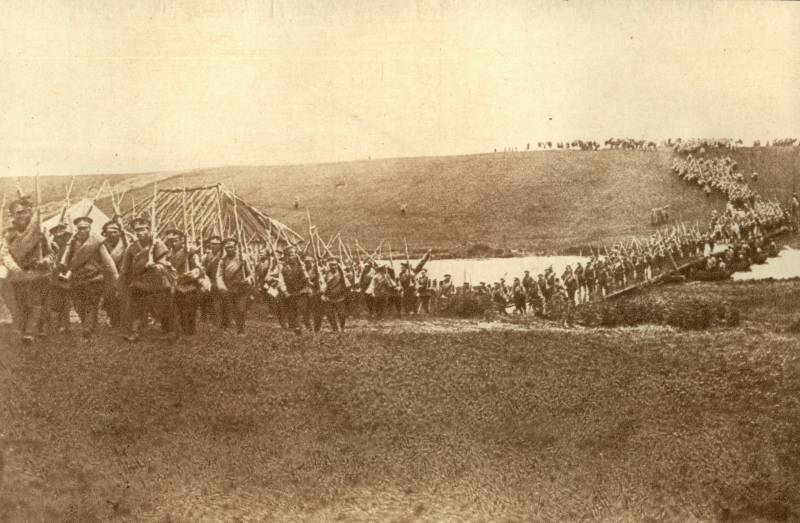
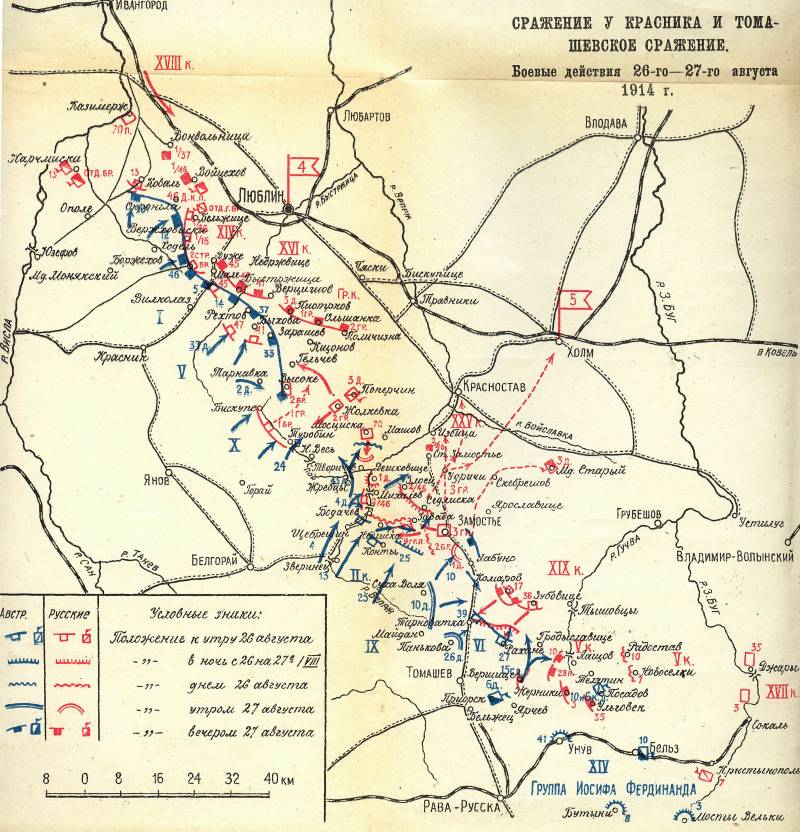
Information